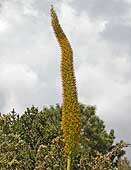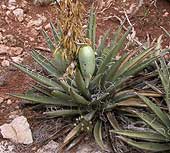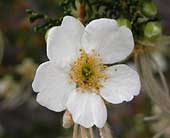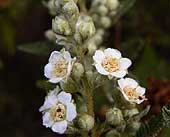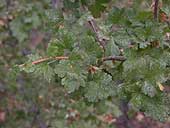Plants of the Grand Canyon
There are more than 1,500 known species of vascular plants, 167 species of fungi, 64 species of moss and 195 species of lichen found in Grand Canyon National Park. This variety is largely due to the 8,000 foot elevation change from the river up to the highest point on the North Rim. Grand Canyon boasts a dozen endemic plants (known only within the Park's boundaries) while only ten percent of the Park's flora is exotic. Sixty-three plants found here have been given special status by the U.S. Fish and Wildlife Service. Grand Canyon National Park contains 129 vegetation communities, and the composition and distribution of plant species is influenced by climate, geomorphology and geology.Along the Colorado River and its perennial tributaries, a riparian community exists. Coyote willow, arrowweed, seep willow, western honey mesquite, catclaw acacia, and exotic tamarisk (saltcedar) are the predominant species. Hanging gardens, seeps and springs often contain rare plants such as the white-flowering redbud tree, haploppapus and flavaria.
Above the river corridor a desert scrub community, composed of North American desert flora, thrives. Typical warm desert species such as creosote bush, white bursage, brittle brush, catclaw acacia, ocotillo, mariola, western honey mesquite, four-wing saltbush, big sagebrush, blackbrush and rubber rabbitbrush grow in this zone.
Above the desert scrub and up to 6,200 feet is a pinyon pine, Utah and one seed juniper woodland. Within this woodland one can find big sagebrush, snakeweed, Mormon tea, Utah agave, banana and narrowleaf yucca, snakeweed, winterfat, Indian ricegrass, dropseed, and needlegrass.
Ponderosa pine forests grow at elevations between 6,500 feet and 8,200 feet, on both North and South rims. Additional species such as Gambel oak, New Mexico locust, mountain mahogany, elderberry, creeping mahonia, and fescue have been identified in these forests. Above 8,200 feet, spruce-fir forests characterized by Englemann spruce, blue spruce, Douglas fir, white fir, aspen, and mountain ash, along with several species of perennial grasses, groundsels, yarrow, cinquefoil, lupines, sedges, and asters, brave the sub-alpine climate.
Montane meadows and subalpine grassland communities are rare and located only on the North Rim. Both are typified by many grass species. Some of these grasses include blue and black grama, big galleta, Indian ricegrass and three-awns. The wettest areas support sedges and forbs.
